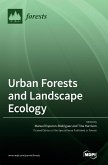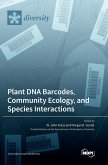Understanding the patterns of biodiversity and their relationship with environmental gradients is a key issue in ecological research and conservation in forests. Several environmental factors can influence species distributions in these complex ecosystems. It is therefore important to distinguish the effects of natural factors from the anthropogenic ones (e.g., environmental pollution, climate change, and forest management) by adopting reliable models able to predict future scenarios of species distribution. In the last 20 years, the use of statistical tools, such as Species Distribution Models (SDM) or Ecological Niche Models (ENM), allowed researchers to make great strides in the subject, with hundreds of scientific research works in this field. This book collects several research articles where these methodological approaches are the starting point to deepen the knowledge in many timely and emerging topics in forest ecosystems around the world, from Eurasia to America.








